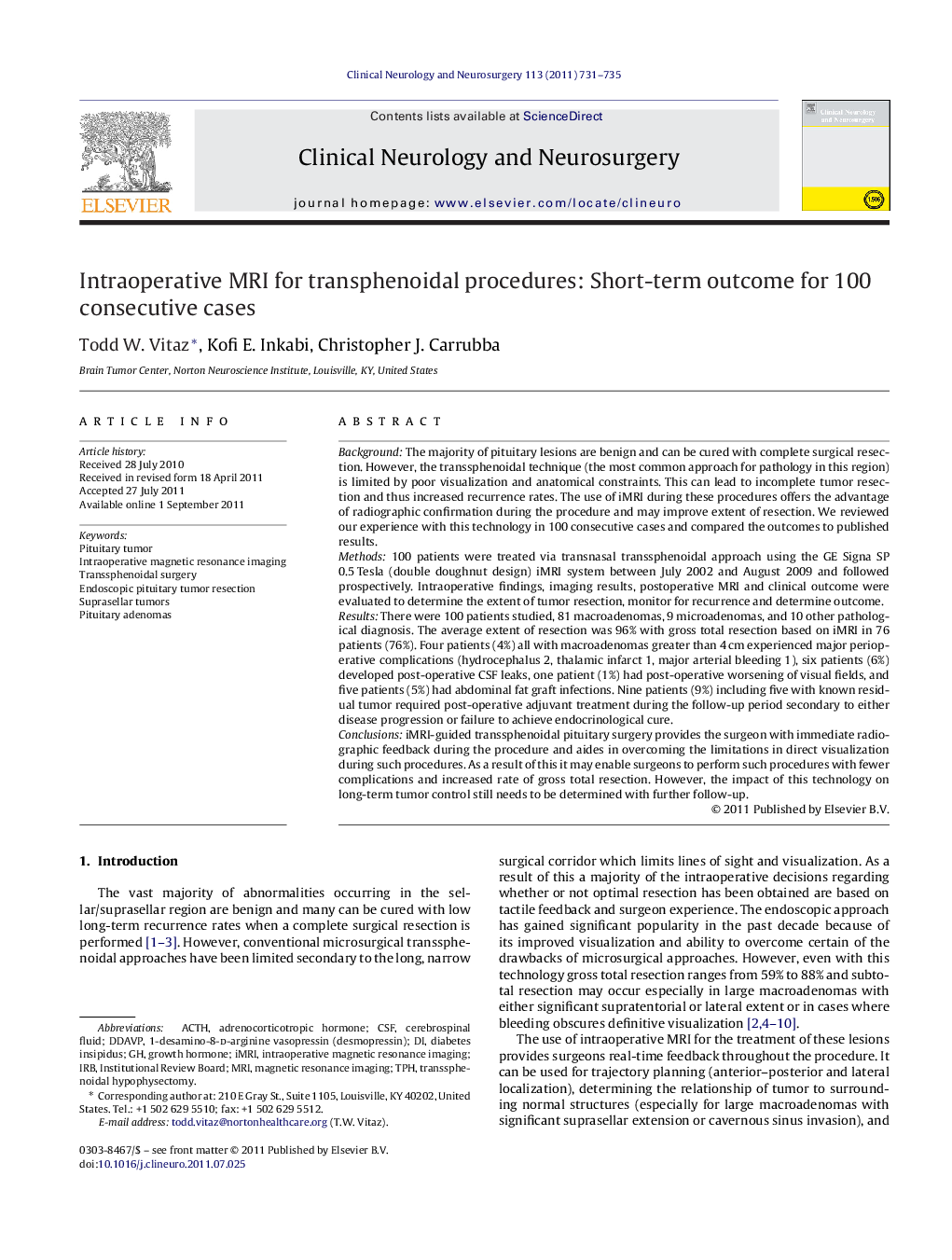| کد مقاله | کد نشریه | سال انتشار | مقاله انگلیسی | نسخه تمام متن |
|---|---|---|---|---|
| 3040986 | 1184757 | 2011 | 5 صفحه PDF | دانلود رایگان |

BackgroundThe majority of pituitary lesions are benign and can be cured with complete surgical resection. However, the transsphenoidal technique (the most common approach for pathology in this region) is limited by poor visualization and anatomical constraints. This can lead to incomplete tumor resection and thus increased recurrence rates. The use of iMRI during these procedures offers the advantage of radiographic confirmation during the procedure and may improve extent of resection. We reviewed our experience with this technology in 100 consecutive cases and compared the outcomes to published results.Methods100 patients were treated via transnasal transsphenoidal approach using the GE Signa SP 0.5 Tesla (double doughnut design) iMRI system between July 2002 and August 2009 and followed prospectively. Intraoperative findings, imaging results, postoperative MRI and clinical outcome were evaluated to determine the extent of tumor resection, monitor for recurrence and determine outcome.ResultsThere were 100 patients studied, 81 macroadenomas, 9 microadenomas, and 10 other pathological diagnosis. The average extent of resection was 96% with gross total resection based on iMRI in 76 patients (76%). Four patients (4%) all with macroadenomas greater than 4 cm experienced major perioperative complications (hydrocephalus 2, thalamic infarct 1, major arterial bleeding 1), six patients (6%) developed post-operative CSF leaks, one patient (1%) had post-operative worsening of visual fields, and five patients (5%) had abdominal fat graft infections. Nine patients (9%) including five with known residual tumor required post-operative adjuvant treatment during the follow-up period secondary to either disease progression or failure to achieve endocrinological cure.ConclusionsiMRI-guided transsphenoidal pituitary surgery provides the surgeon with immediate radiographic feedback during the procedure and aides in overcoming the limitations in direct visualization during such procedures. As a result of this it may enable surgeons to perform such procedures with fewer complications and increased rate of gross total resection. However, the impact of this technology on long-term tumor control still needs to be determined with further follow-up.
Journal: Clinical Neurology and Neurosurgery - Volume 113, Issue 9, November 2011, Pages 731–735